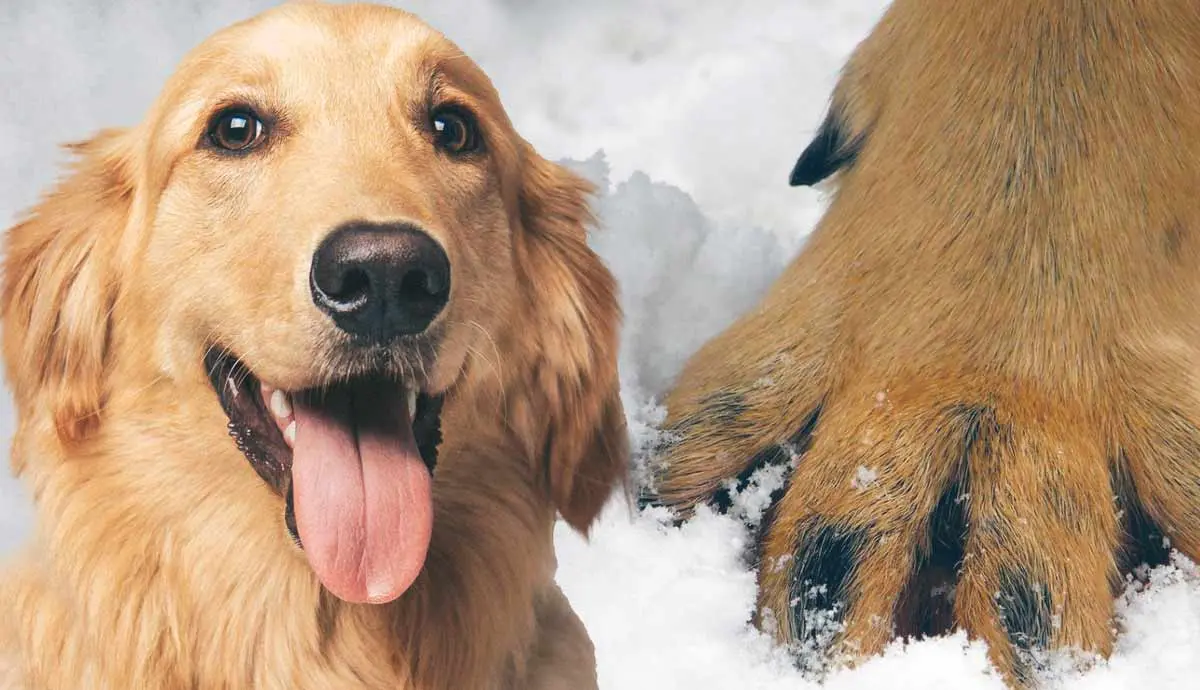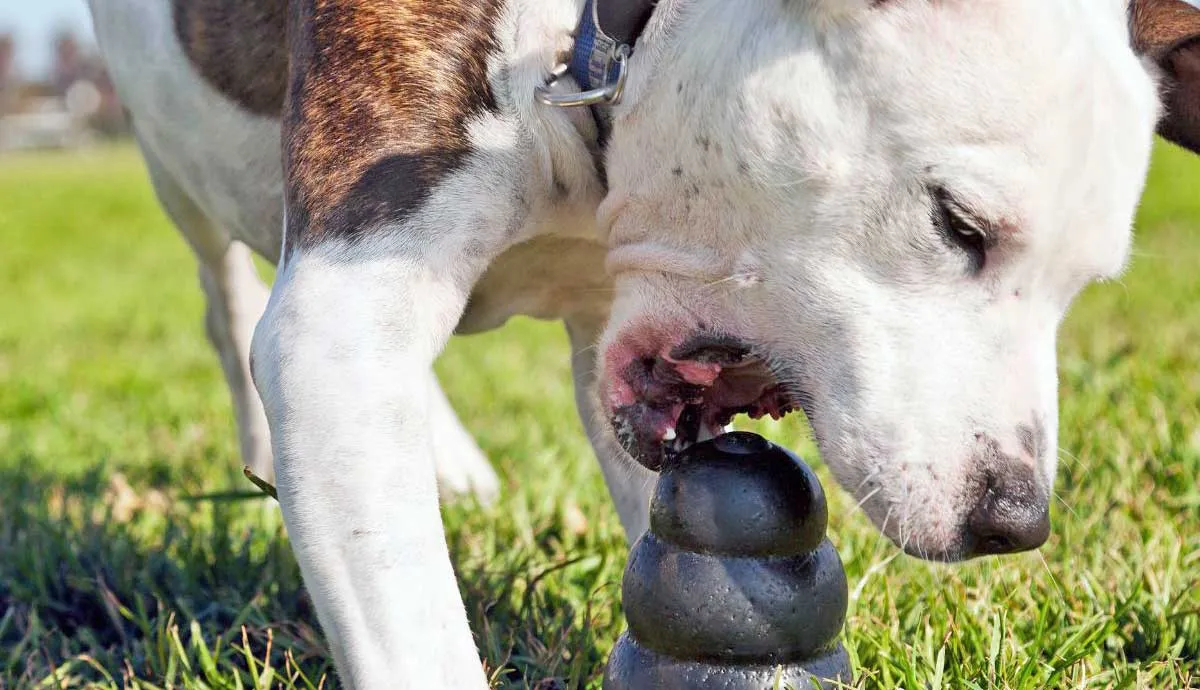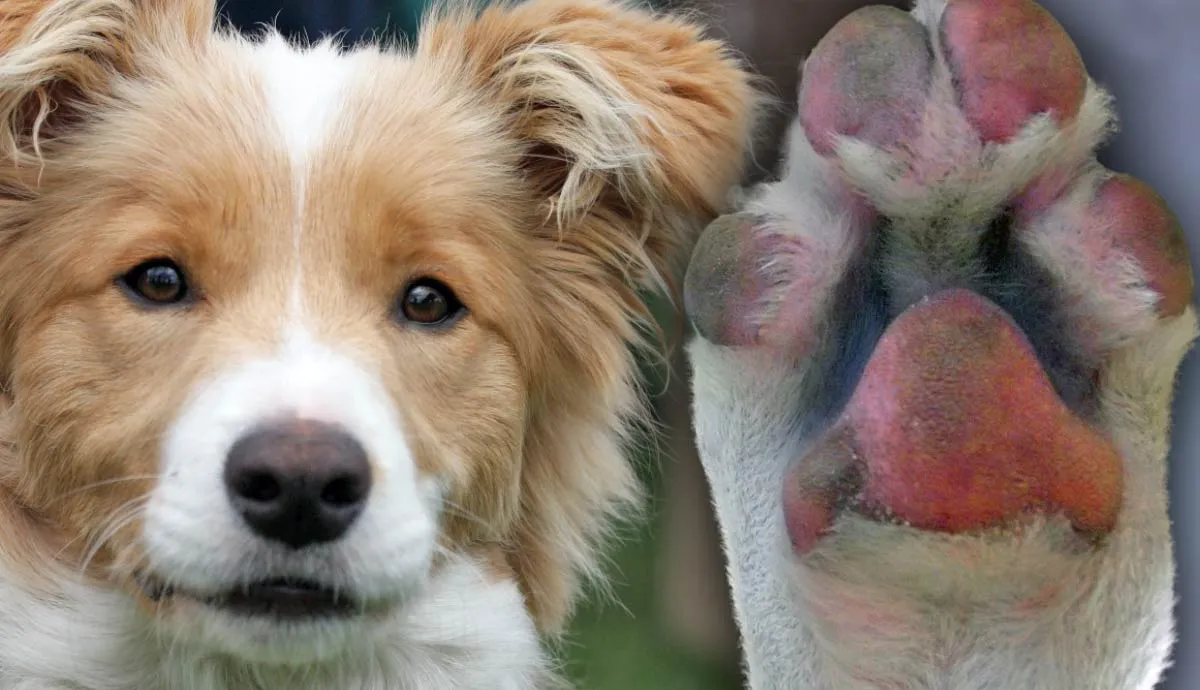Have you ever noticed webbing between your dog’s toes? Many dog breeds, especially water-retrieving dogs, have webbed feet that help them to swim, dig, burrow, and grip slippery surfaces. This adaptation is what makes water dogs unique.
Newfoundland, Portuguese Water Dogs, Labrador Retrievers, and Poodles are just some of the many dog breeds with webbed feet.
Read on to learn about how webbed feet improve a dog’s skills in water.
What Do Webbed Feet Look Like?
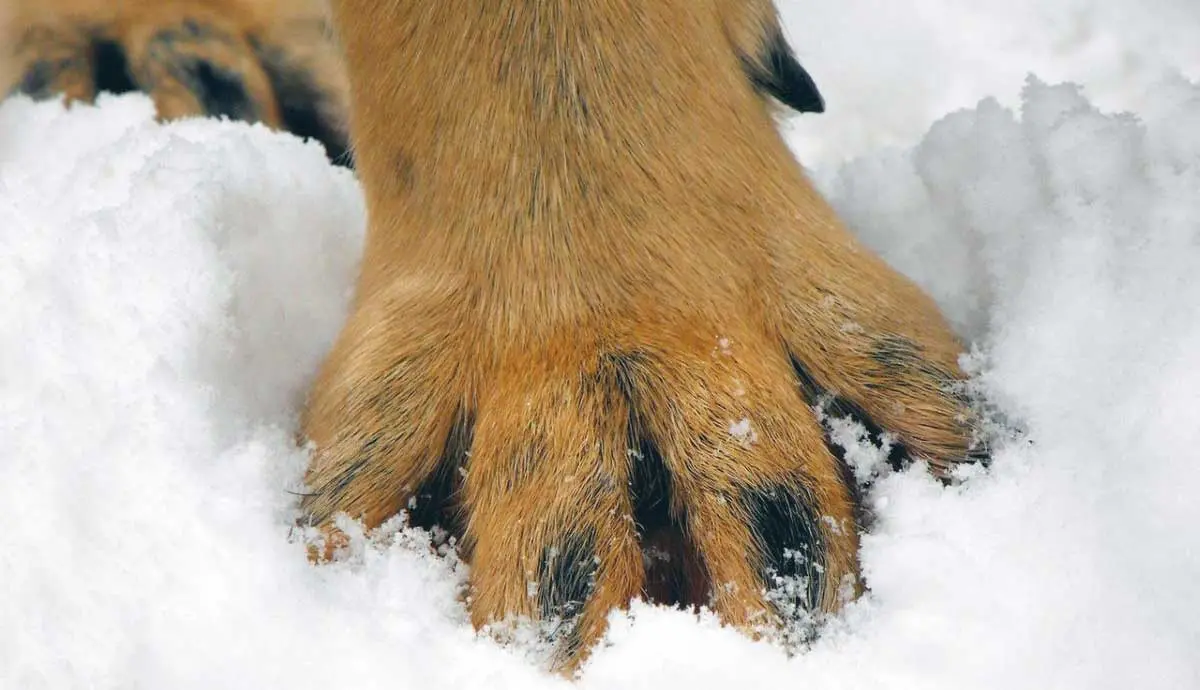
If you hold up your dog’s paw and press gently on their paw pad, their toes should slightly spread. Most dogs have a little webbing between these digits, but some breeds will have more than others. This will be a thin membrane of skin connecting digits together.
Webbing serves many functions. It creates more surface area on the paw, which helps dogs to have more speed and efficiency in the water. The increased surface area also improves buoyancy, helping to distribute a dog’s weight more evenly on the water surface. Paws with webbing act like a rudder that a dog uses to steer while they are swimming.
However, webbed feet can also help dogs while they are on land. Dogs with webbed feet are also better able to grip slippery surfaces once they are out of the water. They are also phenomenal diggers. Webbing works like a built-in shovel to scoop out dirt and burrow into the ground.
Much like many other aquatic animals, this webbing is an important feature of water-retrieving dog breeds.
Newfoundland

The large and gentle Newfoundland is a working dog that originated on Newfoundland Island. The dog is a cross between the native dogs on the island and the Great Pyrenees.
People often use Newfoundland to rescue people from the sea. Their webbed feet help them to navigate through the freezing water in search of people. Their large size gives them powerful muscles for swimming through tough waters. They also have a large lung capacity so they can extend periods of diving underwater. Their heavy, oily coats protect them from cold water.
Newfoundland dogs are famously patient and gentle, giving them a reputation as nanny dogs. They are also great watchdogs and companions.
Portuguese Water Dog

Researchers aren’t completely in agreement about when the Portuguese Water Dog breed began. The general idea is that they somehow came to the Iberian Peninsula and interbred other working dogs that belonged to the Romans, Visigoths, and Moors. Eventually, a breed with wiry hair became invaluable to Portuguese fishermen, who adopted the breed as their own and kept it going.
In their work with the fishermen, these dogs became great at water work. They herded fish into nets, retrieved lost supplies, and became messengers between boats. Their wide, webbed feet help them to paddle through the water for long periods, and their curly, waterproof coats keep them warm.
These water dogs are very easy to train and are great with children, making them excellent family dogs. Portuguese Water Dogs are also very playful and have a lot of energy, making them the perfect companion for someone who has an active, outdoor lifestyle.
Labrador Retrievers

The Labrador Retriever also hails from Newfoundland. These dogs trace their origins to the European fishermen who were venturing to the coast and bringing their working dogs with them. These dogs produced two well-known water-loving dog breeds: the larger Newfoundland and the smaller Labrador Retriever.
Labs adore the water, and their webbed feet, paired with an otter-like tail, make them especially good swimmers. These shorthaired dogs quickly became a Newfoundland Island favorite. Ice didn’t accumulate on their fur the way it did with the larger Newfoundland breed. Labrador Retrievers were easy to train to retrieve fishing lines and nets.
Eventually, their popularity spread, which led to where they are today—America’s second most popular breed, according to the American Kennel Club. These medium-to-large dogs need lots of exercise because they are very energetic. They are incredibly friendly and easygoing dogs that make wonderful companions and working dogs.
Poodles
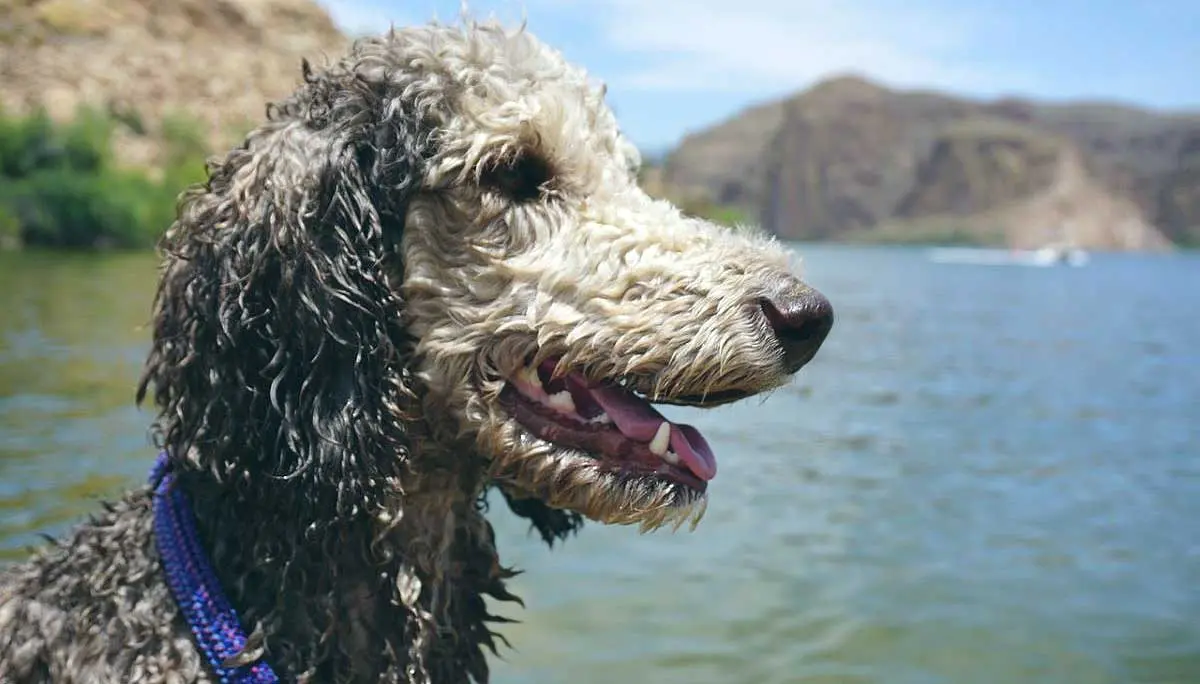
Despite being commonly mistaken for a French dog breed, the Poodle originated in Germany as a water retriever. They are also great diggers and were often used for hunting truffles, an edible and highly prized fungus. However, the aristocrats of France became fascinated by this thick, curly-coated dog, so this breed is more often associated with elegance than hard work.
However, the Poodle was made for the water. Their distinctive clip was originally done to keep them warm and maneuverable in the water. Their webbed feet helped them to dive into the water after ducks or to dig in the woods at a tree’s base for truffles. These beautiful dogs are active and take commands well from a distance. They can learn to complete complex tasks and are incredibly agile. There’s a reason why there are so many Poodle mixes today!
Other Dogs with Unique Traits
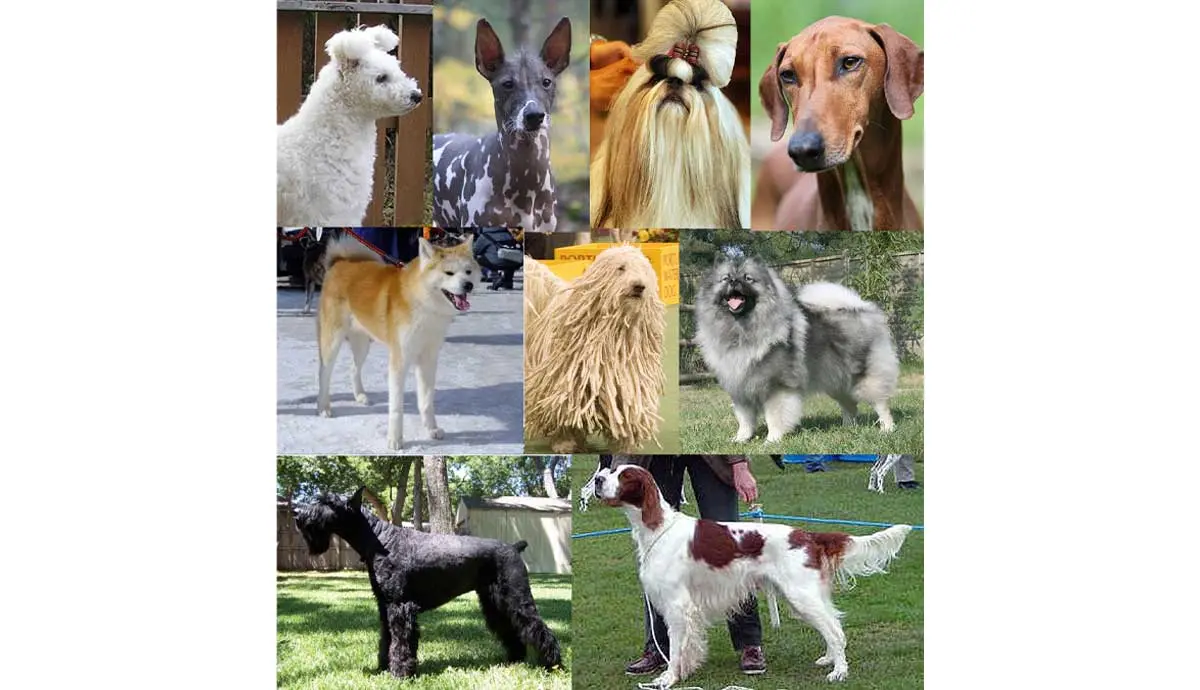
The webbed-feet dogs on this list aren’t the only canines with interesting physical characteristics. For instance:
- The Great Pyrenees have double dew claws that help them navigate mountainous terrain.
- Neapolitan Mastiffs were bred with heavy jowls to ward off would-be thieves and threats to owners’ safety.
- Greyhounds were bred to have sleek bodies, so they would be aerodynamic when hunting prey and racing.
Webbed Feet Have Unique Advantages

Webbed feet are an amazing feature of many water dog breeds. Their webbed feet help them to navigate through the water more efficiently, give them more traction on slippery surfaces, and provide the dog more buoyancy. Newfoundland, Portuguese Water Dogs, Labrador Retrievers, and Poodles are some of the dog breeds that have webbed feet. Their webbed feet increase their ability to work and play in the water for long periods.
